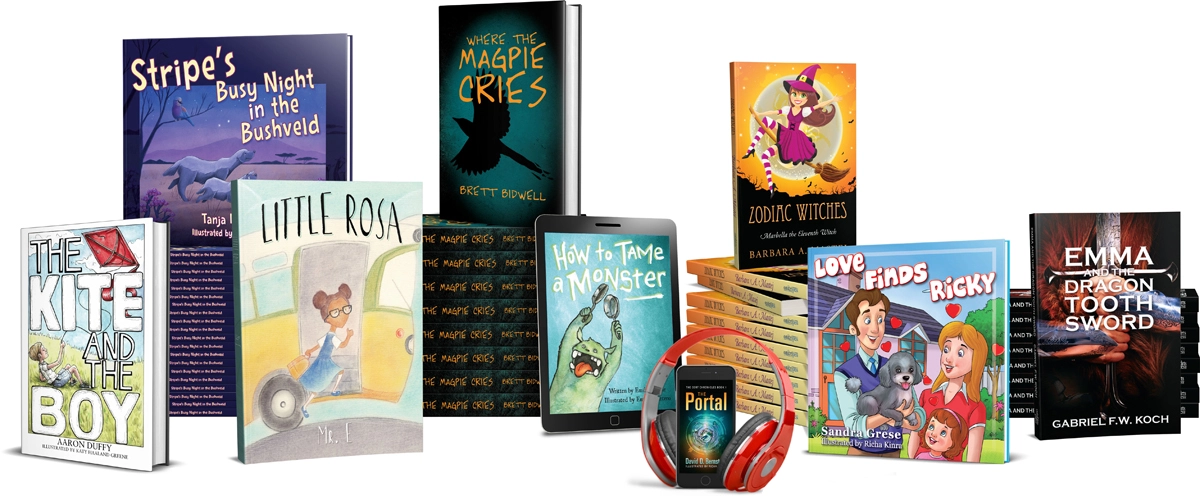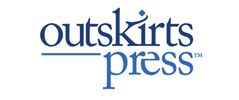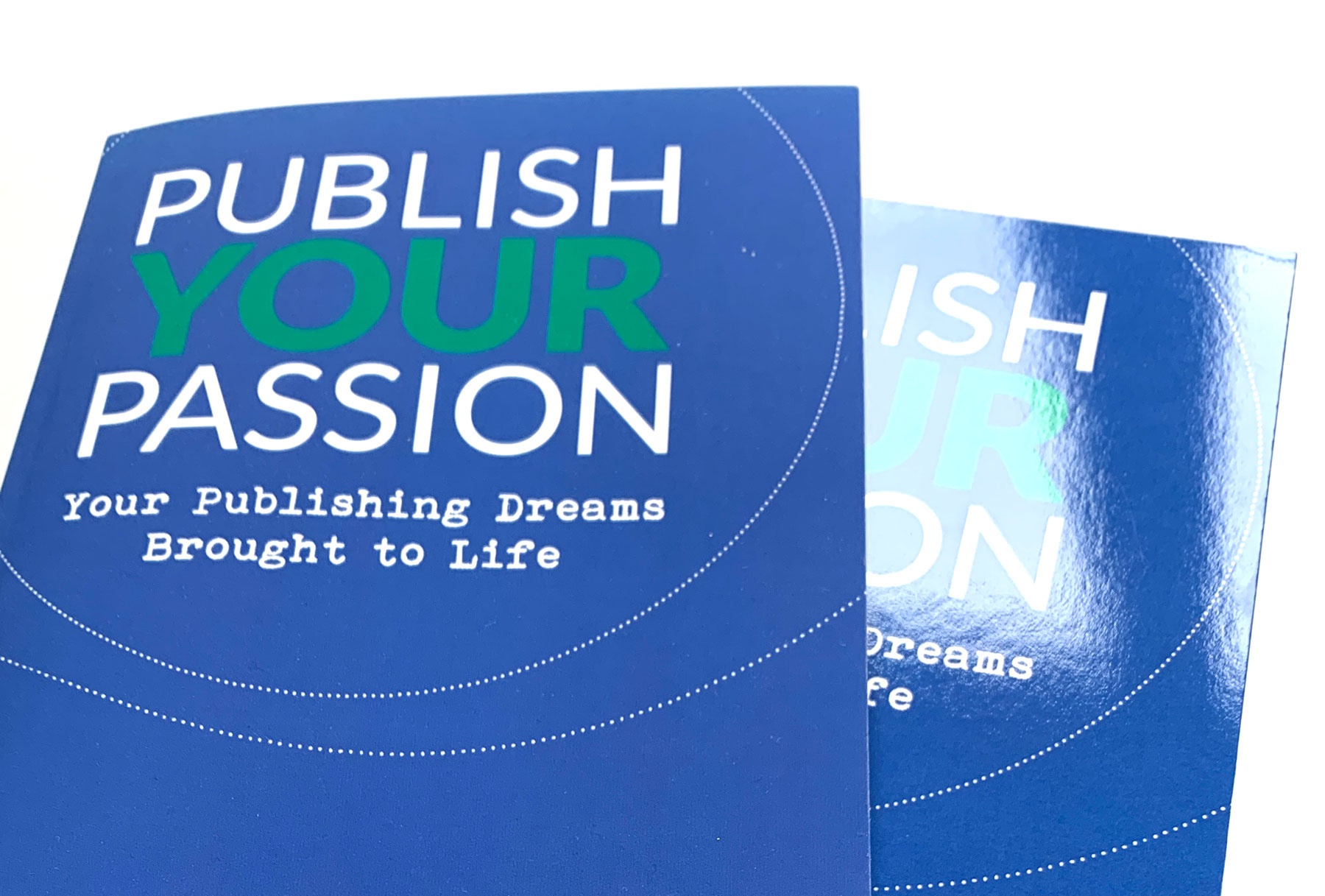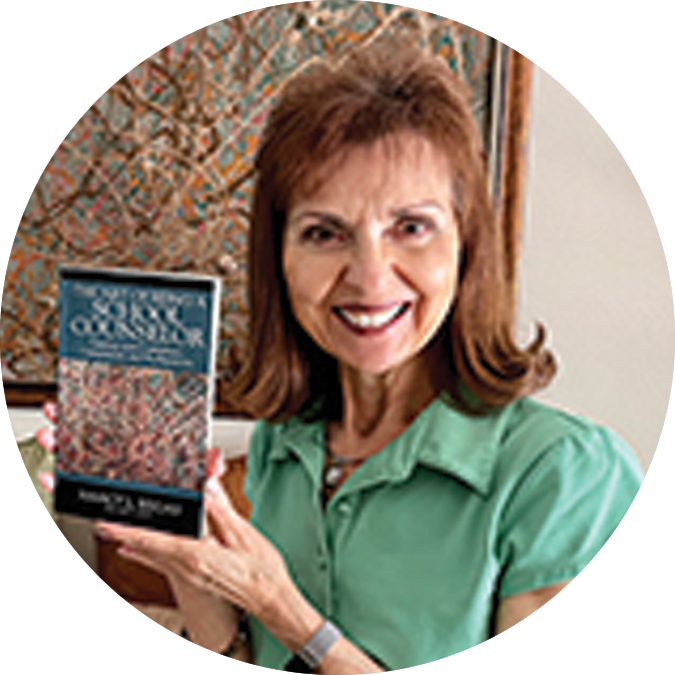Paperback and Different Size Hardback

$499
Hardcover Editions: A Smarter Strategy for Serious Authors
Savvy authors know that different readers buy in different ways. Publishing both a paperback and a hardback expands your reach, boosts your credibility, and gives you more ways to sell your story.
Your paperback offers affordability and everyday convenience, while a hardback delivers premium appeal, and is perfect for libraries, collectors, gifts, and author events.
Scroll down (below the trim size selection table) for more information on selecting the best trim size, binding, paper color, and cover finish for your book.
Outskirts Press authors publishing with the Ultimate or Basic Publishing Packages (or any of our One-Click Publishing & Marketing Suites) have the ability to publish in both paperback and hardback formats.
Why Your Book's Trim Sizes is Important:
Your trim size impacts your book's page count and weight. Page count and weight are important factors in pricing your book as well as shipping it.
Your trim size impacts your book's overall look and feel. The size of your book is often based on the conventions of your book's genre—You wouldn't want to read an 8x11 adult fiction book or try to cook a meal from a 4x7 book that won't stay open to the page you need, right? Choose a trim size that makes sense for your book.
If you don't know what trim size is considered "industry standard" for your genre, go to a local bookstore to see what trim sizes are most commonly used on books in your genre.
Binding Style Options:
 Perfect Bound Paperback:
Perfect Bound Paperback:Paperbacks are printed with your full-color cover image on 80# cover stock and have either a glossy or matte finish. The pages and cover are glued together at the spine.
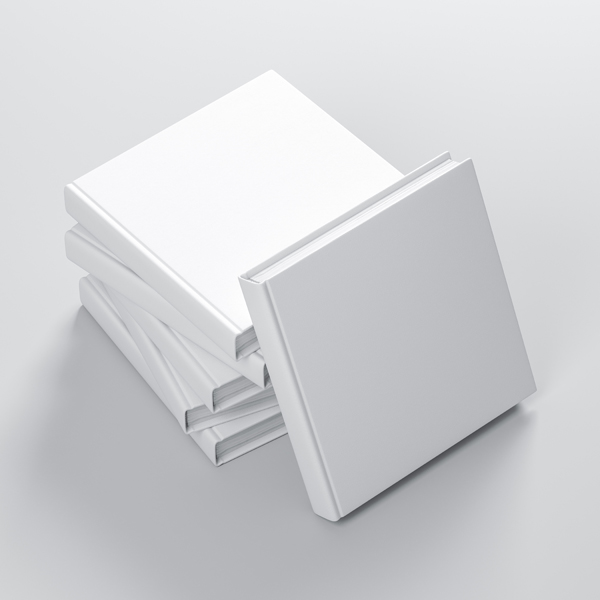 Casebound Hardback:
Casebound Hardback:As an available upgrade, a laminated casebound hardback is made of cardboard wrapped in paper that has your full-color cover image printed directly on it with either a glossy or matte finish. The pages are glued to the cardboard hardcover at the ends. Follow this link for additional details on our laminated casebound hardbacks.
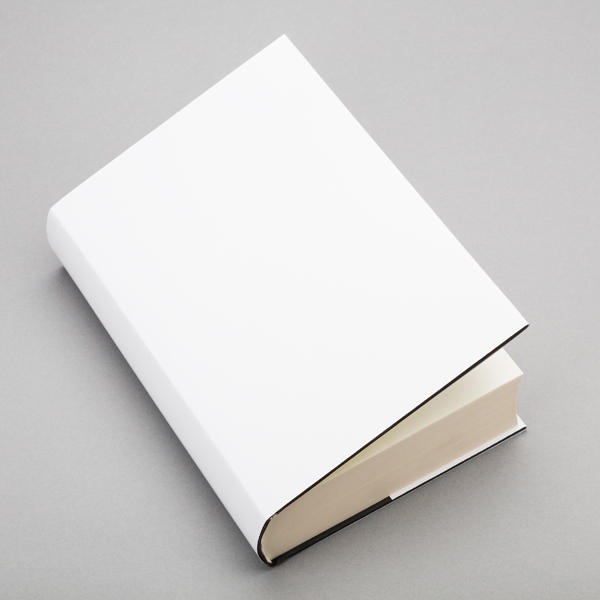 Dust-Jacket Hardback:
Dust-Jacket Hardback:As an available upgrade, a dust-jacketed hardback will have a laminated casebound cover (printed blue and then coated with textured lamination that gives the book a linen type "feel") which is then covered in a removable, full-color, wrap-around dust jacket in either a glossy or matte finish. The pages are glued to cardboard hardcover at the ends.
The book title and your name are printed along the spine, space permitting (up to 42 characters).
Follow this link for additional details on our dust-jacket hardbacks.
Cover Finish Options:
All paperback books and dust-jackets are printed with full-color covers on 80# cover stock.
Paper Colors Options Available for Black & White Books:
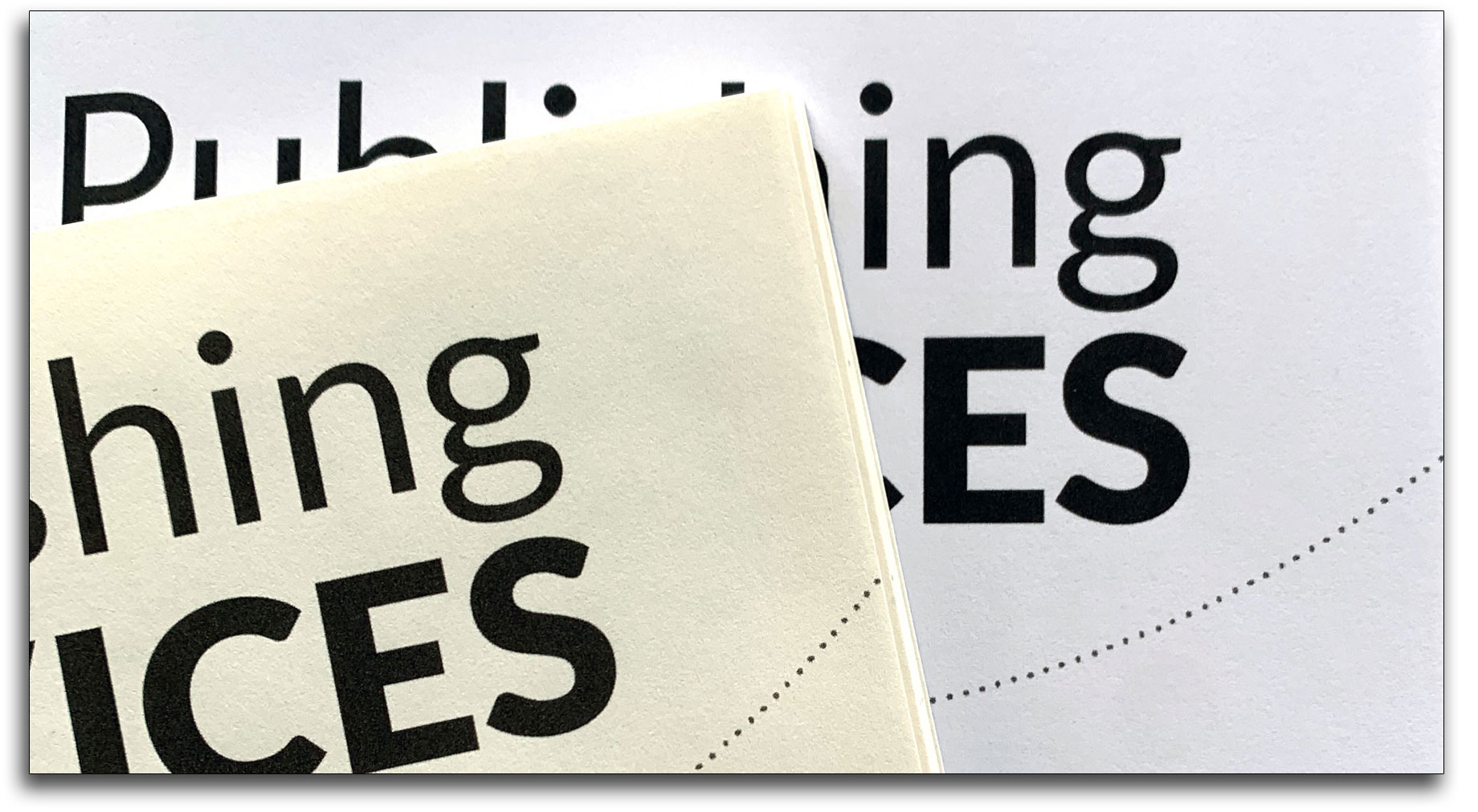 White 50# paper with a matte finish
White 50# paper with a matte finish- White 70# paper with a matte finish (only available upon request, talk to your Publishing Consultant to see if this paper option is right for your book)
- Crème 50# recycled paper with a matte finish (not available with 5x8 hardback or 7x10 and 8.5x11 paperback or hardback)
Paper color is mostly an aesthetic choice; however, according to the American National Association for Visually Handicapped's (NAVH) Best Practices & Standards, crème paper is easier on the reader's eyes.
Crème paper is not recommended if your book has graphic elements (like images, charts, graphs, etc.). White paper is generally better for non-fiction books while crème paper is preferred for fiction titles.
Paper Color Available for Color Books:
- White 70# paper with a matte finish
Combine with either standard or premium quality printing to strike the best balance between cost and quality based on your full-color book's individual needs.
Print Quality Options Available for Color Books:
- Standard: Standard color is printed using laser jet printers and is the most cost effective. This print quality is recommended for books with more than 50 pages, books with spot color, or books with limited images printed on only one side of the page.
- Premium: Premium color is printed using inkjet printers. This print quality is recommended for books with less than 50 pages or books with lots of images printed on both sides of the page.
- Ultra-Premium: Ultra-Premium color is printed using inkjet printers that are slowed during printing to allow maximum ink saturation on each page. This print quality is recommended for books with less than 50 pages or books with lots of images printed on both sides of the page that require extreme ink saturation. Only available upon request, talk to a Publishing Consultant to see if this print quality is right for your book.
Print quality matters because it increases the cost to produce your book and therefore the retail price of the book (and/or reduces your profit on each book).
Why Publish a Hardback?
There are four main reasons authors choose to publish a hardback edition of their book.
- Some readers prefer the durability and prestige associated with a hardcover book and are willing to pay it.
- Libraries prefer to carry hardcover books because they stand up better to repeated use.
- Different readers prefer different formats. By making your book available in multiple formats (paperback, hardback, ebook, and audiobook), you are maximizing your sales potential.
- Some genres are more typically published in hardcover including cookbooks, children's books and some nonfiction genres. If your target audience has an expectation, you want to make sure you are fulfilling it.
Book Size Recommendations:
If you have a series to publish, we recommend that all books in the series are published at the same size.
FICTION Books: Fiction books are typically 6x9, 5.5x8.5, or 6.14x9.21—rarely are they larger.
We do not recommend a laminated casebound hardback for a fiction book.
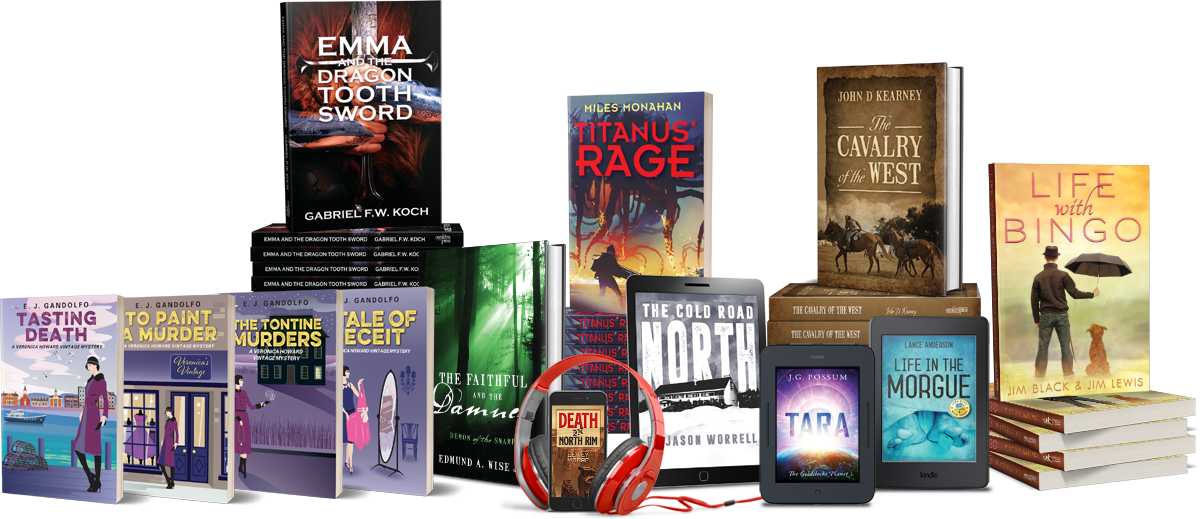
POETRY Books: Poetry books tend to be 5.5x8.5 or 6x9. As with fiction books, it's best to avoid the laminated casebound option.

NON-FICTION Books: Non-fiction books are typically 6x9, 6.14x9.21, or 7x10—rarely are they smaller, though they can sometimes be larger at 8x10 or 8.5x11. Whether or not your non-fiction book is the laminated casebound or the dust-jacket option is largely dependent on your particular sub-genre and/or personal choice. Cookbooks, in particular, are almost always laminated hardbacks, so they lay open easily for your would-be chef.
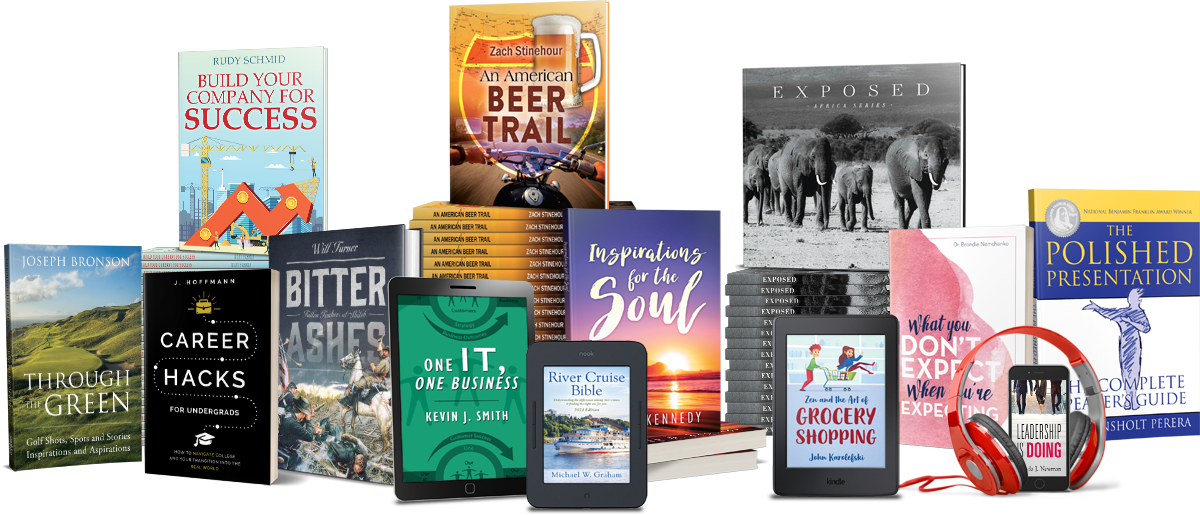
JUVENILE Books: Children's books can be paperback, laminated casebound or dust-jacket hardbacks. But we typically recommend laminated casebound since dust jackets can be easily lost or torn by little ones. The most popular sizes for children's picture books are 8.5x8.5 (square), 11x8.5 (landscape), or 8.5x11 (portrait).